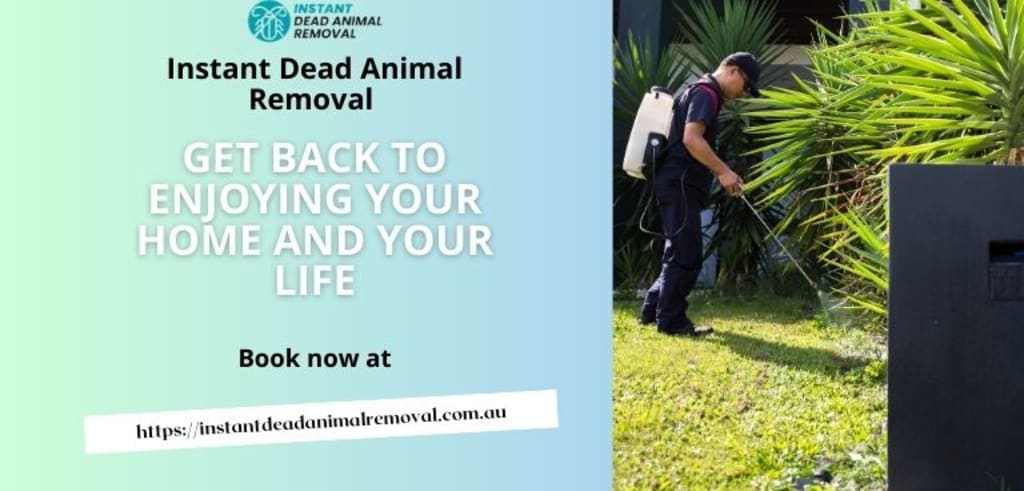The Hidden Dangers of Insects and Rodents in Your Home
In this blog post, we'll delve into some of the most common pests found in homes and how they can impact your well-being.

Do you ever think about the creepy crawlies that may be hiding in your home? It's easy to overlook these tiny creatures, but they could pose a serious threat to your health and safety. From mosquitoes carrying deadly diseases to rodents chewing through electrical wires, it's important to understand the hidden dangers of insects and rodents lurking in your living space. In this blog post, Dead Animal Removal Rosslyn Park will delve into some of the most common pests found in homes and how they can impact your well-being. Keep reading if you're ready to face these sneaky intruders head-on!
Overview of Insects and Rodents and their Dangers
Insects and rodents can pose a serious threat to your family’s health and safety. These pests can carry diseases that can be passed on to humans, and some of them can also cause damage to your home.
There are a few different ways that you can become infected with a disease from an insect or rodent. One way is through direct contact, like when a flea bites you. Another way is through indirect contact, like when you touch something that an infected insect or rodent has been in contact with and then you put your hand in your mouth. You can also become infected by inhaling dust that has been contaminated by an insect or rodent.
Some of the diseases that these pests can carry include:
• Salmonella – This bacteria can cause food poisoning. It is usually passed on to humans through contaminated food, but it can also be transmitted through contact with an infected animal or person.
• E. coli – This bacteria is found in the intestines of animals and humans. It can be passed on to humans through contact with contaminated food or water, or through contact with an infected animal or person.
• Typhus – This disease is carried by rats and other rodents. It is passed on to humans through Flea bites, or by coming into contact with contaminated clothing, bedding, or rat droppings.
Common Household Areas Where Insects and Rodents can Infest
There are a number of common household areas where insects and rodents can infest. These include:
- kitchens;
- food storage areas;
- pantries;
- cupboards;
- drawers;
- under sinks;
- behind appliances;
- in cracks and crevices;
- in wall voids;
In addition, these pests can also be found in:
- laundry rooms;
- bathrooms;
- bedrooms;
- living rooms; and,
- any other room in the house.
Health Hazards Posed by Insects and Rodents
Most people are aware that insects and rodents can be a nuisance, but few realize the hidden dangers they pose. These pests can carry diseases that can be transmitted to humans, causing serious illness or even death. They can also trigger allergies and asthma attacks, and their droppings can contaminate food and lead to food poisoning. In addition, some insects and rodents are capable of inflicting painful bites or stings.
The best way to protect yourself and your family from the health hazards posed by these pests is to prevent them from entering your home in the first place. Keep your home clean and free of clutter where they can hide, and seal any cracks or openings that would give them access. Regularly inspect your home for signs of infestation, and call in a professional if you suspect you have an infestation.
Prevention Tips to Keep Insects and Rodents Out of Your Home
One of the best ways to prevent insects and rodents from getting into your home is to seal any cracks or openings on the outside of your home. This includes weather-stripping doors and windows, sealing gaps around electrical wires and pipes, and filling holes in walls.
You should also keep your home clean and clutter-free to make it less attractive to pests. Vacuum regularly, sweep floors, and wash dishes and countertops. Store food in airtight containers, and keep garbage in sealed bins.
In addition to these general prevention tips, there are some specific things you can do to keep specific pests out of your home:
For ants, try sprinkling cinnamon or Borax powder around entry points. You can also make a DIY ant trap with sugar water and boric acid.
For cockroaches, keep your kitchen clean and free of food crumbs. You can also use roach traps or baits containing boric acid to kill them.
For silverfish, try using diatomaceous earth around areas where they’re commonly found, such as baseboards or under appliances. You can also use insecticide sprays or gels specifically formulated for silverfish.
For rats and mice, seal any openings leading into your home, including holes in walls and gaps around doors and windows. You can also set up traps baited with cheese or peanut butter near areas where you’ve seen them before.
Signs of an Infestation
There are several signs that may indicate you have an infestation of insects or rodents in your home. These includes finding droppings or evidence of nesting material in your home, seeing live insects or rodents, or hearing sounds coming from behind walls or in attics. If you suspect you have an infestation, it is important to contact a pest control professional to have the problem treated.
Control Methods for Existing Infestations
There are a few different methods that can be used to control an existing infestation of insects or rodents in your home. The most common method is to use pesticides. Pesticides are available in many different forms, including aerosable baits, aerosable liquids, and aerosable powders. Pesticides should be used according to the manufacturer's instructions, and you should always take care to avoid contact with the poison. If you have pets or children, be sure to keep them away from areas where pesticides have been used.
Another common method for controlling an infestation is to use traps. Traps can be either live or kill traps. Live traps capture the animal without harming it, so that it can be released into the wild later. Kill traps, on the other hand, kill the animal immediately. There are many different types of traps available on the market, so be sure to choose one that is appropriate for the type of pest you are dealing with.
You may also want to consider calling in a professional exterminator. Exterminators will have access to stronger pesticides and more sophisticated traps, and they will know how to properly use them in order to get rid of your pest problem quickly and effectively.
Alternatives to Chemical Controls
There are many effective alternatives to using harmful chemicals to control insects and rodents in your home. Here are a few of the most popular:
* Trapping: This is a great way to get rid of pests without harming them. There are many different types of traps available, so you can choose the one that best suits your needs.
* Exclusion: This involves sealing up any cracks or openings that pests could use to enter your home. This is often the most permanent and effective solution.
* Physical controls: These include things like diatomaceous earth and sticky traps. They work by either killing the pests outright or making it difficult for them to move around, which eventually leads to their death.
* Biological controls: This involves using other organisms to help control the population of pests. For example, ladybugs eat aphids, so releasing them into your garden can help keep aphid populations under control.
Conclusion
When it comes to pests in your home, the hidden dangers can range from minor inconveniences to serious damage. It is important to take preventive measures such as regular cleaning and pest control services, even if you do not currently detect any visible signs of these pests. If you think that you may have an infestation, contact a professional immediately so that they can identify and eliminate the source of the problem quickly and effectively. Taking proactive steps now will help protect your family’s health and safety for years to come.





Comments
There are no comments for this story
Be the first to respond and start the conversation.